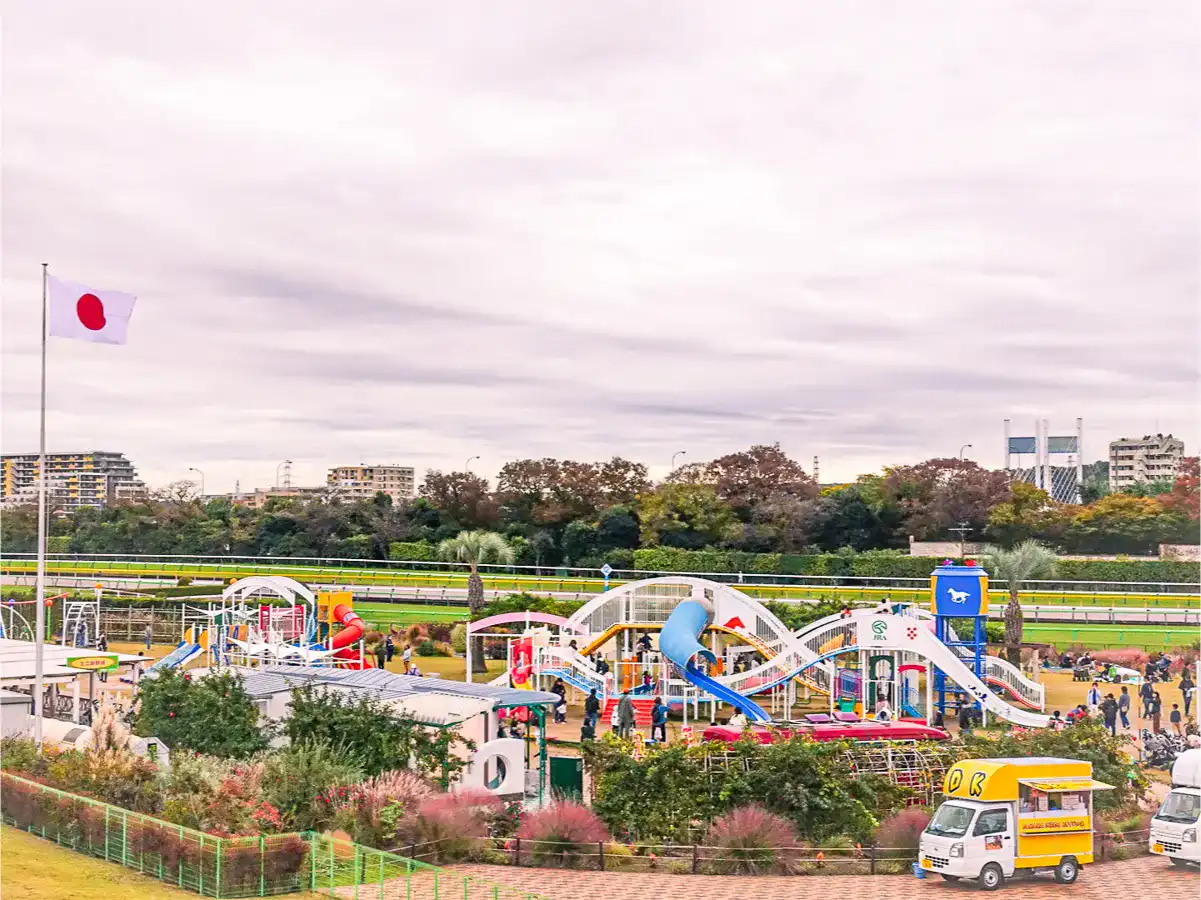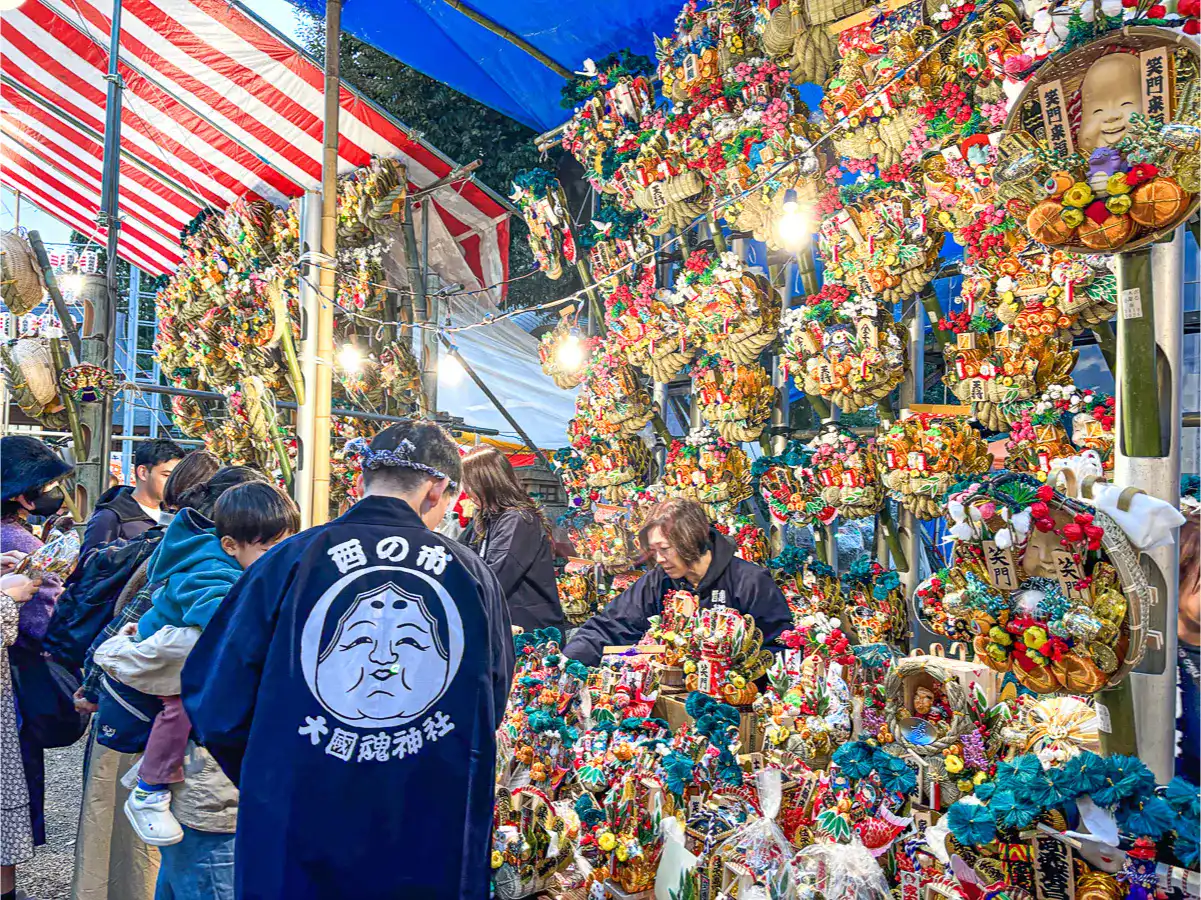
Chofu and Fuchu in West Tokyo is a completely different part of the capital despite being 30 minutes by train from Shinjuku Station. There’s Jindaiji Temple, Kitaro Chaya, and the Tokyo Racecourse! Let’s dive into an extraordinary part of Tokyo together! Latest update : 2024.02.26
Tama, located in the western side of Tokyo, is an area rich with nature and its location makes it especially easy to access Chofu and Fuchu by train from the city center. The city vibes and nostalgic nature-filled atmosphere coexist in these cities to truly encapsulate the image of being a rural city. You can enjoy being surrounded by the lush greenery and seasonal landscapes. In this article, we introduce the perfect spots for enjoying a stroll in Chofu and Fuchu.

Jindai Botanical Gardens has the largest rose garden in Tokyo and is where you can admire plum blossoms, cherry blossoms, and a variety of other flowers. Flower-related festivals and events are also held with the change of the seasons.

You can see rare tropical plants, an orchid and begonia flower garden, and tropical water lilies in the large greenhouse next to the rose garden and gain new knowledge while taking in the beautiful scenery. Moreover, the gardens are open at night during the summer for visitors to enjoy the flowering flora in the evening!

On days with great weather, you can also picnic on the large grass field or visit the nearby Jindaiji Temple, which will be introduced in the next paragraph.
| Name | Jindai Botanical Gardens |
|---|---|
| Address | 182-0017 Tokyo, Chofu, Jindaiji Motomachi 5-31-10 Google Maps |
| Website | https://www.gotokyo.org/en/spot/431/index.html |

Jindaiji Temple has 1,300 years of history and is a very famous sightseeing destination in Japan. Sanmon Gate in particular is an existing architecture from the Edo period and one of the few structures that escaped being lost in a large fire that hit Jindaiji Temple in the past. It is designated a tangible cultural property of Chofu together with the temple’s main hall which houses a statue of the Crown Amitabha Buddha. The architecture on the Jindaiji Temple grounds are also worth appreciating in detail. The Shakyamuni Buddha, the oldest national treasure in East Japan, is enshrined at the temple along with other gorgeous Buddha statues and paintings. Stroll through the temple grounds as ancient scents waft in the air. By doing so, you will experience the world of Japanese Buddhism and feel purified in both mind and body.

Jindaiji Temple is known to protect against evil and boost luck in creating connections. Ganzan Daishi, the founder of omikuji (fortune slips) in Japan, is enshrined here. Omikuji is currently available at most temples, but “kyo” or bad fortune slips may be removed depending on the shrine or temple. This is to ensure that visitors can easily pull a “kichi” or good fortune slip. But many bad fortune slips are pulled from Jindaiji Temple’s Ganzan Daishi Omikuji due to the fact that the ratio of good and bad fortune slips in the box has never changed for a long time. Nevertheless, it’s thought that “a bad fortune has the power to turn things in the right direction” so it doesn’t necessarily mean something horrible if you pull a bad fortune!
| Name | Jindaiji Temple |
|---|---|
| Address | 182-0017 Tokyo, Chofu, Jindaiji Motomachi 5-15-1 Google Maps |
| Website | https://www.gotokyo.org/en/spot/256/index.html |

Jindaiji Yaoki, a popular soba noodle shop, is located along the approach to Jindaiji Temple. Kusa manju, sweet red bean paste wrapped in a crispy steamed bun, has an irresistible taste and fluffy texture when eaten warm. On the other hand, their mitarashi dango, delicious sweet dumplings grilled on charcoal fire and generously basted in a salty-sweet sauce, are completely different from premade dango! You can eat it as you walk or enjoy it together with some warm tea inside the shop. Either way, it is incredibly Japanese.

The Jindaiji Waterwheel Museum has free entry and is near the dango shop. Outside the museum is a recreation of the water wheels that were communally used by farmhouses in the past. Farm tools and equipment from before the mechanization of agriculture are also exhibited and give a glimpse into the lives of farmers of this area from the past.
| Name | Jindaiji Yaoki |
|---|---|
| Address | 182-0017 Tokyo, Chofu, Jindaiji Motomachi 5-13-6 Google Maps |
| Website | https://chofu.com/yaoki (Japanese) |
| Name | Jindaiji Waterwheel Museum |
|---|---|
| Address | 182-0017 Tokyo, Chofu, Jindaiji Motomachi 5-10-6 Google Maps |
| Website | https://www.city.chofu.tokyo.jp/www/contents/1176118977628/ (Japanese) |

The Jindaiji area possesses clean water which makes it suitable for cultivating soba (buckwheat) and has prospered in soba cultivation for hundreds of years. Although the production volume of soba in the region has gradually decreased with time, there are still around 20 traditional soba shops in the Jindaiji area.

Jindaiji Suijin-en serves delicious soba noodles and a variety of Japanese dishes. It was even visited by His Majesty the Emperor Reiwa when he was the crown prince. You can, of course, enjoy a meal as well as the beautiful Japanese garden at Jindaiji Suijin-en. On nice days, experience Japanese elegance by walking through the garden.
| Name | Jindaiji Suijin-en |
|---|---|
| Address | 182-0017 Tokyo, Chofu, Jindaiji Motomachi 5-10-3 Google Maps |
| Website | https://www.musashinokk.co.jp/suijin-en/ (Japanese) |

Chofu was the second home of Mr. Shigeru Mizuki, manga artist of the much beloved “GeGeGe no Kitaro.” For this reason, there are many famous spots related to the manga series in the Jindaiji area. kitarochaya, housed in a wooden building built over 60 years ago, is one of those places. The theme of GeGeGe no Kitaro is “coexisting with nature” and depicts a world where humans, supernatural creatures, and all living things on earth coexist with nature in the Jindaiji area surrounded by lush greenery.

There are a plethora of Kitaro goods at the teahouse. The cafe also offers menus inspired by characters that appear in the series. For Kitaro fans, this spot is not to be missed!
| Name | kitarochaya |
|---|---|
| Address | 182-0017 Tokyo, Chofu, Jindaiji Motomachi 5-12-8 Google Maps |
| Website | https://kitaro-chaya.jp/ (Japanese) |

The Tokyo Racecourse, otherwise known as Fuchu Racecourse, opened in 1933 and has a history of 90 years. It has undergone multiple renovations and has now become a modern place that can be enjoyed by the entire family while relaxing.

It not only functions as a racecourse, but also houses many restaurants and playgrounds for children within the facility. You can sometimes even see Mt. Fuji from the stands on days with great weather. Various events to interact with the horses are held at the racecourse and is the best place for residents to relax on the weekends. Multilingual information pamphlets are available inside the facility and lectures on horse racing are also taught at the racecourse. Both non-Japanese speakers and horse racing novices can enjoy horse racing too!

There are many opportunities to interact with horses at Tokyo Racecourse. However, one of the most popular options is the horse carriage ride. Download the racecourse’s mobile app and registered users can enter the lottery to win a limited ticket to the horse carriage ride during the racecourse’s operating hours. Ride a horse carriage through the tree-shaded road and you can experience indulgence like an ancient European noble.

The JRA Racing Museum is a museum inside Tokyo Racecourse that is themed around horse racing. Here, you can see the history of horse racing in Japan and around the world, exhibits on memorial races, and horse racing videos in the audiovisual hall to experience the fun and depth in horse racing.

There are many other attractions at the racecourse as well. Experience the moment the race starts from the starting line as a jockey or play the role of a starter that waves the flag. These small experiences are also very popular.
| Name | Tokyo Racecourse |
|---|---|
| Address | 183-0024 Tokyo, Fuchu, Hiyoshicho 1-1 Google Maps |
| Website | https://japanracing.jp/lp/en/ |

Ookunitama-jinja Shrine has a history of more than 1,900 years and is the soja (a shrine where several deities are enshrined) of the Musashi Province (the area that encompasses present-day Tokyo, Saitama Prefecture, and a part of Kanagawa Prefecture) in ancient Japan. Currently, it is one of the five major shrines of Tokyo alongside Hie Shrine, Meiji Jingu, Yasukuni Shrine, and Tokyo Daijingu. As a shrine established more than 1,000 years ago dedicated to the god of fortune, it hosts various festivals every month and is where you can experience the lively atmosphere of a Japanese shrine. Kurayami Festival, one of the most unusual festivals in the Kanto region taking place from April 30 - May 6, is a designated intangible folk cultural property of Tokyo and an event you can’t miss.

Tori no Ichi is a festival originating from Otori Shrine in Adachi, Tokyo held on the day of the Rooster in November. Otori Shrine enshrines the god of fortune in war and was worshiped by the samurai class, but gradually became dedicated as the god of fortune by commoners. Items such as farm tools were once sold at Tori no Ichi Festival. Tori no Ichi Festivals are now held all throughout Japan, but Ookunitama-jinja Shrine’s Tori no Ichi is known as one of the three major Tori no Ichi Festivals in Kanto. Business owners visit the festival to purchase decorations called kumade (ornamental bamboo rakes charms). Shop staff enthusiastically call out to people passing by and bless buyers with a prosperous business in the coming year. The venue gets extremely lively!.
| Name | Ookunitama-jinja Shrine |
|---|---|
| Address | 183-0023 Tokyo, Fuchu, Miyamachi 3-1 Google Maps |
| Website | https://www.gotokyo.org/en/spot/377/index.html |
The Tama area in the outskirts of Tokyo is home to lush nature, beautiful scenery, elegant historical structures, anime locations unique to Japan, racecourses, and much more. How about getting away from the hustle and bustle of the capital and visiting to experience the rich ambience of Japan in depth?
Sponsored by Tokyo Metropolitan Government
Tokyo Convention & Visitors Bureau
Many travel courses are being introduced on TAMASHIMA.tokyo , a sightseeing information website, to discover a “new luxury” in the Tama area and islands of Tokyo. Please feel free to check it out.
Visited Nov 10-11, 2023, for this article.